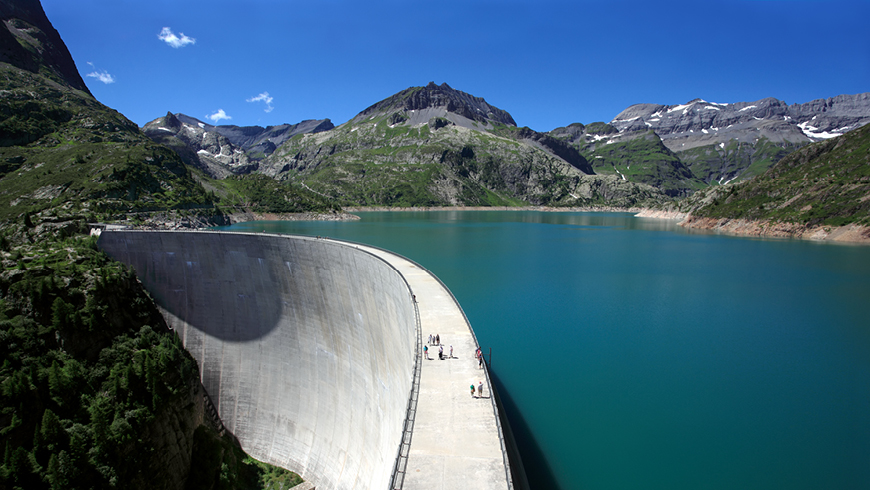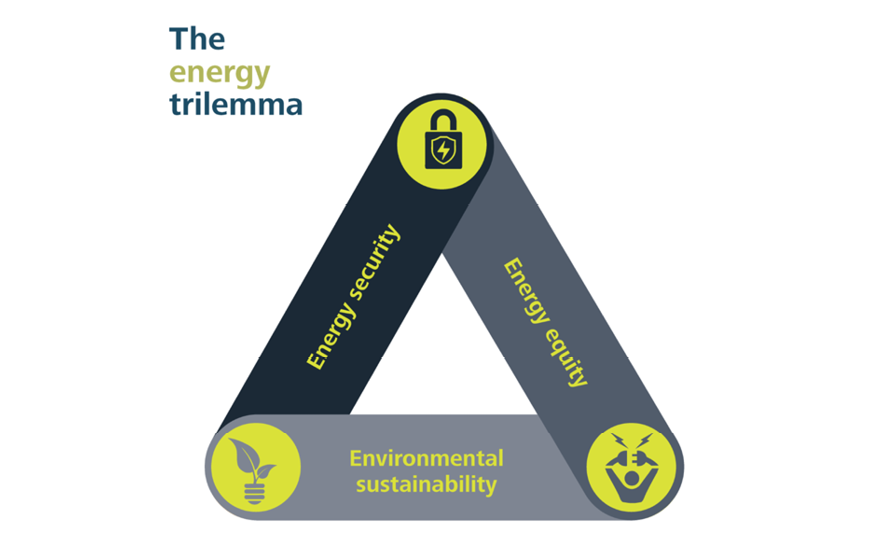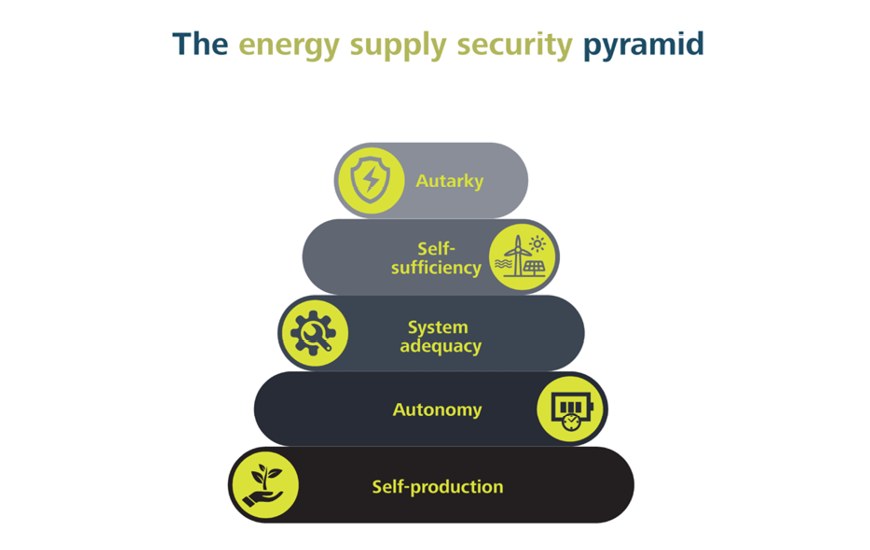Solving the energy trilemma
How secure is our energy supply?
We need to make our energy system more sustainable – but what is the best way to achieve this? In order to plan the energy supply of the future, policymakers need sound facts and figures. Science already provides reliable models for comparing the sustainability and the costs of different energy systems. Now, Empa researchers have also developed a model for calculating supply security.

The energy transition poses challenges for countries, cities, and regions. The use of sustainable sources of energy is key to halting climate change. At the same time, the costs of the energy system must not spiral out of control, and supply security must be ensured. These three aspects – sustainability, costs, and supply security – form what is known as the energy trilemma.
The energy trilemma was developed by the World Energy Council to support policymakers in designing the energy systems of tomorrow. By modeling the three criteria on a sound scientific basis, different energy scenarios can be compared quantitatively, ideally revealing the path that offers the optimal balance between the three target variables.
The sustainability and costs of different energy systems can already be reliably quantified using a number of models. Until now, however, this has not been the case for supply security. “Many of the existing models were vague, not user-friendly, and not designed for today’s modeling capabilities,” says Matthias Sulzer, Head of Empa’s Engineering Sciences department. Together with researchers from Empa, ETH Zurich, and the Lawrence Berkeley National Laboratory in the US, Sulzer has developed a better way for quantifying energy supply security. The work was recently published in the journal iScience.

The five levels of energy supply security
The model takes the form of a pyramid with five levels. The researchers have provided quantitative indices for each level. The bottom level, self-production, is a simple energy balance calculation: How much energy can a country produce from its own resources annually, and how much does it consume? The second level describes autonomy; i.e., how much energy needs to be imported over the course of the year, and how secure are the import routes. Starting on the third level of the pyramid, system adequacy, dynamic effects come into play. “Here, we examine hourly – or at an even higher resolution – whether the energy demand can be met at any given time from any source,” explains co-author Georgios Mavromatidis, head of Empa's Urban Energy Systems Laboratory. The fourth level deals with self-sufficiency: Can the country manage without imports at certain times? At the top level, the researchers talk about complete autarky, where the country can live off its own energy production at any time throughout the year (or even longer).
Although the levels build on each other, Mavromatidis stresses that they should all be considered simultaneously. “Modern energy systems are very complex. The pyramid is intended to help assess the various indices correctly and clarify the terminology,” says the researcher. Its key strength over existing models is that its higher levels take dynamic effects into account. “Renewable energy systems in particular are operated very dynamically, because wind and sun are not always available to the same extent,” says Mavromatidis. “An average annual balance is thus not a good indicator of supply security in such a system.”

More security with renewable energy
The researchers emphasize that the pyramid should be viewed as a first proposal, that serves as a basis for further discussion, research, and refinement of the indices. Nevertheless, the model can already be used for energy planning. The researchers demonstrated this in their study using Switzerland as an example. They used the pyramid to compare the current energy supply security in Switzerland with a future scenario for the year 2050, which they had already modeled during a previous study in collaboration with the Association of Swiss Electricity Companies (VSE).
The analysis shows that with the right mix of renewable energies, Switzerland can increase its energy security in the future. According to Matthias Sulzer, two factors in particular contribute to this: increased diversification of energy sources and higher domestic production. Additional storage facilities also contribute to secure the energy supply, as they can be used to bridge fluctuations. This does not only include hydroelectric reservoirs: “Thermal storage facilities, in which we can store and utilize industrial waste heat, are also important, as are batteries,” explains the researcher. “At Empa, for example, we are also researching approaches to using electric cars for temporary electricity storage when they are not on the road.”
Switzerland will not become fully self-sufficient in the researchers' future scenario – nor is that necessarily the goal, according to Sulzer. “This is where the energy trilemma comes into play,” he explains. “Of course, it would be technically possible to establish a completely self-sufficient energy supply in Switzerland. Even a self-sufficient and sustainable system would be feasible – but that would significantly drive up the costs.” With a mix of imports and domestic production, as well as different energy sources, Switzerland can balance costs, sustainability, and supply security.
Prof. Matthias Sulzer
Engineering Sciences
Phone +41 58 765 47 29
Dr. Georgios Mavromatidis
Urban Energy System Laboratory
Phone +41 58 765 42 99
M Sulzer, G Mavromatidis, A Nuñez-Jimenez, M Wetter: The energy supply security pyramid: A quantitative framework for planning and policy making; iScience (2025); doi: 10.1016/j.isci.2025.112407
-
Share






